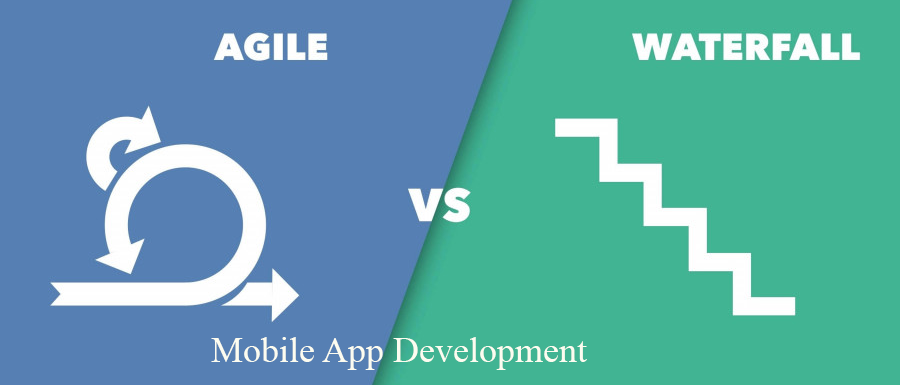Question: Which is Better Agile vs Waterfall for mobile app development
Waterfall and Agile are two of the most popular software development models. While the Waterfall model assumes a linear, sequential approach, it dictates that a project should progress through a series of distinct stages, each building upon the preceding one. The stages of the Waterfall model are:
- Requirements gathering and analysis
- Design
- Implementation or coding
- Testing
- Deployment
- Maintenance
The Waterfall model suits projects with well-defined requirements, fixed project scopes, and minimal changes. Typically, organizations use this model for projects with a clear and defined end goal.Agile development, however, is iterative and flexible, thus thriving in rapidly changing environments with fluid scopes. Moreover, it empowers continuous evolution for projects lacking detailed initial specifications.
In Agile development, the team works in short sprints, typically two to four weeks, and at the end of each sprint, the team delivers a working version of the software. The team then gets feedback from the stakeholders, and the next sprint is planned based on this feedback. The Agile development model is highly collaborative. Additionally, the team works closely with the stakeholders throughout the project. Popular Agile methodologies, such as Scrum, Kanban, and Lean Development, offer various frameworks for implementation.
Comparing Waterfall and Agile Development Models for Mobile App Development: Which is the Best Fit?
Mobile app development is a highly iterative and rapidly changing process, so Agile is often considered a better fit. Agile methodologies such as Scrum and Kanban provide a flexible framework for managing and adapting to changes in requirements, and allow for more frequent releases and feedback from users.
Mobile app development often involves creating a minimum viable product (MVP) quickly. Subsequently, refining it based on user feedback through agile development is paramount. This process entails short sprints and frequent releases for iterative improvement.
Additionally, Agile development emphasizes on cross-functional teams, which is also ideal for mobile app development as it requires skills from multiple disciplines such as design, development, testing, and deployment.
However, it’s worth noting that the choice of development model depends on the specific needs and constraints of the project. If a project has well-defined requirements, a fixed scope, and minimal changes, then one can also consider Waterfall as a suitable model for mobile app development.
At Krify, our expert team of project managers, quality analysts, designers, and developers creates exceptional mobile applications for medium to large-scale needs. Contact us through our form for specific app requirements, and we’ll guide you on the best model to choose.
Tags & Questions:
- Mobile app development models
- Agile vs Waterfall for mobile app development
- Choosing the right software development model for mobile app
- Waterfall model in mobile app development
- Advantages of Agile development for mobile apps
- Comparison of Waterfall and Agile in mobile app development
- Which development model is best for mobile app development: Agile or Waterfall?
- Pros and cons of using Waterfall and Agile in mobile app development
- Understanding the differences between Waterfall and Agile for mobile app development
- How to choose between Waterfall and Agile for mobile app development project?



